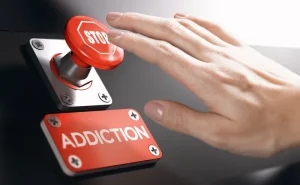
Additionally, alcohol has been reported to effect hepatic glycolytic and gluconeogenic enzyme activities including a reduction in phosphofructokinase [41]. The resulting alcohol-induced decrease in pyruvate lowers pyruvate carboxylase, the rate limiting gluconeogenic enzyme, thereby contributing to the decrease in hepatic glucose output [38]. Aside from these changes, however, reports are inconsistent and contradictory regarding the effects of alcohol on glycolytic and gluconeogenic enzymes [33,38,42]. In vivo determination of transhepatic glucose flux in 48–72 h fasted dogs, with essentially no glycogen reserves, indicates acute alcohol markedly impairs gluconeogenesis [31]. Alcohol also dose-dependently inhibits lactate-stimulated gluconeogenesis when given acutely in the in situ perfused liver [32] and when added to isolated hepatocytes [33]. Collectively, these data are consistent with those from in vivo studies showing acute alcohol decreases whole-body estimates of glucose recycling (e.g., glucose → lactate → glucose) and lactate turnover [27].
Is it ok for people with diabetes to drink alcohol?
- Both hormones are produced in areas of the pancreas called the Islets of Langerhans, which, quite literally, are “islands” of hormone-producing cells in a “sea” of digestive enzyme-producing cells.
- Initially, resistance can be overcome by increasing insulin production.
- Some people find that alcohol helps them deal with stress or when they’re feeling low.
- Furthermore, alcohol can affect metabolism and how the body processes carbohydrates and fats.
With 4.6 grams of carbs per 12-ounce (360-mL) serving, it provides roughly 50% fewer carbs than a regular Budweiser (11, 12). Bud Lite is another low carb beer that provides fewer than 5 grams of carbs per serving. The funders had no role in study design, data collection or analysis, decision to publish, or preparation of the manuscript. The views expressed are those of the authors and not necessarily those of the funders. Upon identifying a single study that contributed a substantial proportion of sampled data, an a posteriori sensitivity analysis was undertaken.

2. Hepatic Insulin Action and Resistance
Heavy alcohol consumption increases ROS production and may be a mechanism of pancreatic β-cells dysfunction in T2DM. The reason is that ROS production is one of the earliest events in glucose intolerance, through mitochondrial dysfunction. Previous studies of alcohol dependence have shown that alcohol elevated the level of β-cell apoptosis and increased insulin resistance in the liver and skeletal muscle, which is https://ecosoberhouse.com/ among the earliest detectable alterations in humans with T2DM [20]. These studies demonstrated the diabetes-related lipid abnormalities, by insulin sensitivity, mediated oxidative stress and the altered metabolism has been shown to have a deleterious effects after heavy drinking, an effect mediated by insulin. The hormone insulin, which is produced in the pancreas, is an important regulator of blood sugar levels.
- This novel approach aligns with a growing interest in utilizing existing medications for off-label purposes to address various forms of addiction.
- Remember, hard alcohol by itself has zero carbs and will not raise your blood sugar but still can put you at risk for low blood sugar that can occur hours after hard liquor ingestion.
- Exercise can also increase the risk of hypoglycemia when coupled with other factors, such as drinking alcohol.
Ozempic for Weight Loss: Who Should Consider It & Is It Effective?
Detailed analyses demonstrated that although the glucagon and epinephrine responses to hypoglycemia were unaffected, the growth hormone and cortisol responses were reduced after alcohol consumption. Two additional medications—metformin and troglitazone—are now being used to treat people with type 2 diabetes. These agents act to lower the patient’s blood sugar levels by decreasing insulin resistance rather than by increasing insulin secretion. Accordingly, these medications help control blood sugar levels without causing hypoglycemia. Insulin resistance does not immediately lead to overt diabetes, because the patient’s pancreatic beta cells initially can increase their insulin production enough to compensate for the insulin resistance. In fact, insulin-resistant people have higher than normal insulin levels (i.e., are hyperinsulinemic1).

- If you are following a calorie-controlled meal plan, one drink of alcohol should be counted as two fat exchanges.
- However, according to American Diabetes Association (ADA), heavy consumption and zero consumption increase the risk.
- If your liver is overwhelmed with processing the alcohol in your system, it isn’t going to respond normally to the presence of emergency glucagon.
- Elevated levels of those compounds can cause nausea, vomiting, impaired mental functioning, coma, and even death.
To help keep health risks from alcohol at a low level, it’s safest not to regularly drink more than 14 units a week. The guidelines also recommend that if you choose to drink up to 14 units a week, spread this over at least three days. Given the data indicating decreased BDNF in alcoholism, there has been considerable interest in the possibility that chronic alcohol ingestion may impart its negative effects diabetes and alcohol on T2DM, through its effects on BDNF. BDNF, a member of the neurotrophin family, mediated through a specific Trk family receptor tyrosine kinase B (Trk A, Trk B, and Trk C), is abundantly expressed in central and peripheral nervous system [39]. BDNF have received attention, regarding a possible role in regulating neuronal survival, differentiation, synaptic plasticity, cognitive function and memory.
<img class='aligncenter' style='margin-left:auto;margin-right:auto' src="https://ecosoberhouse.com/wp-content/uploads/gain-weight-alcohol-1-1-768×512.webp
” width=”305px” alt=”diabetes and alcohol” />
Alterations of Lipid Metabolism
Diabetes and Alcohol Consumption Dos and Don’ts

Weight Loss Pills: Do They Work?
How many carbs are in alcohol?

